
It is a common belief that people are getting taller with each generation. However, there is a question that often arises, are women getting taller? Let's explore this topic in detail.
Historical Perspective

Historically, women were shorter than men due to various reasons such as poor nutrition, lack of healthcare, and physical labor. However, with advancements in healthcare and nutrition, the average height of both men and women has increased over the years.
Current Height Trends

Studies have shown that women are indeed getting taller. The average height of women has increased by about 1.5 inches in the last century. This increase can be attributed to various factors such as better healthcare, nutrition, and lifestyle changes.
Geographic Differences
It is important to note that there are geographic differences in the height of women. For example, women in Europe and North America have a higher average height than women in South America and Asia. This can be attributed to genetic factors, as well as differences in healthcare and nutrition.
Height and Health
Height can have an impact on a person's health. Taller women may have a lower risk of certain health conditions such as heart disease and stroke. However, taller women may also be at a higher risk of certain types of cancer such as breast cancer.
The Role of Genetics
Genetics play a significant role in determining a person's height. However, environmental factors such as nutrition and healthcare can also have an impact on a person's height.
Conclusion
Overall, women are getting taller due to various factors such as better healthcare, nutrition, and lifestyle changes. However, there are geographic differences in the height of women, and genetics also play a significant role. Height can have an impact on a person's health, and it is important to maintain a healthy lifestyle regardless of height.
Related video of Are Women Getting Taller?
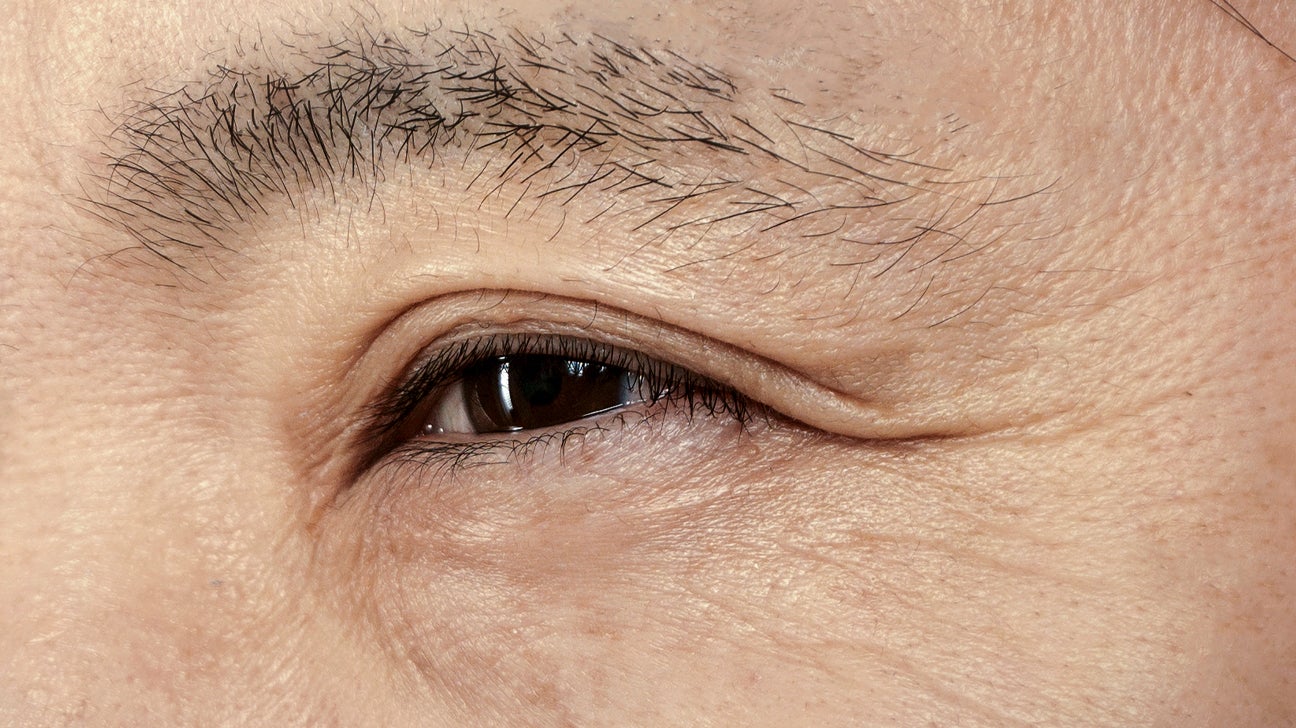
Triple eyelids, also known as Asian double eyelids or tapered eyelids, have become increasingly popular in recent years. This type of eyelid gives the illusion of a more defined crease, making the eyes appear bigger and brighter. But are triple eyelids rare?
What are Triple Eyelids?
Triple eyelids refer to an eyelid shape where there are three folds present instead of the usual two. The first fold is the upper eyelid crease, the second is a smaller crease above the first, and the third is a subtle indentation below the second. This creates a more defined and tapered look.
Are Triple Eyelids Natural?

While some people are born with triple eyelids, it is not a common occurrence. Most people have either a single eyelid or a double eyelid. Triple eyelids are often created through cosmetic procedures such as eyelid surgery or by using eyelid tape or glue.
Why are Triple Eyelids Popular?

Triple eyelids have become increasingly popular in recent years, particularly in Asian countries such as South Korea and Japan. This is due to their ability to create a more defined and youthful appearance, as well as their ability to make the eyes look bigger and brighter.
Are Triple Eyelids Rare?

While triple eyelids are not as common as single or double eyelids, they are not necessarily considered rare. Many people choose to undergo cosmetic procedures to create triple eyelids, and there are also products such as eyelid tape and glue that can be used to create the same effect.
What are the Risks of Getting Triple Eyelids?
As with any cosmetic procedure, there are risks involved with getting triple eyelids. Complications such as infection, scarring, and asymmetry can occur. It is important to choose a qualified and experienced surgeon if you decide to undergo eyelid surgery.
How to Get Triple Eyelids?

If you are interested in getting triple eyelids, there are several options available. Eyelid surgery is the most permanent and effective solution, but it is also the most expensive and risky. Eyelid tape and glue are temporary solutions that can be used to create the same effect without the need for surgery.
How to Care for Triple Eyelids?
Whether you get triple eyelids through surgery or by using tape or glue, it is important to take care of them properly. Avoid rubbing or touching your eyes too much, and be gentle when applying makeup or removing it. Use a mild cleanser to clean the area around your eyes, and avoid using harsh chemicals or products that could irritate your skin.
Conclusion
Triple eyelids are a popular cosmetic trend that can create a more defined and youthful appearance. While they are not necessarily considered rare, they are not as common as single or double eyelids. Whether you choose to get triple eyelids through surgery or by using tape or glue, it is important to take care of them properly to avoid complications and maintain their appearance.
Related video of Are Triple Eyelids Rare?
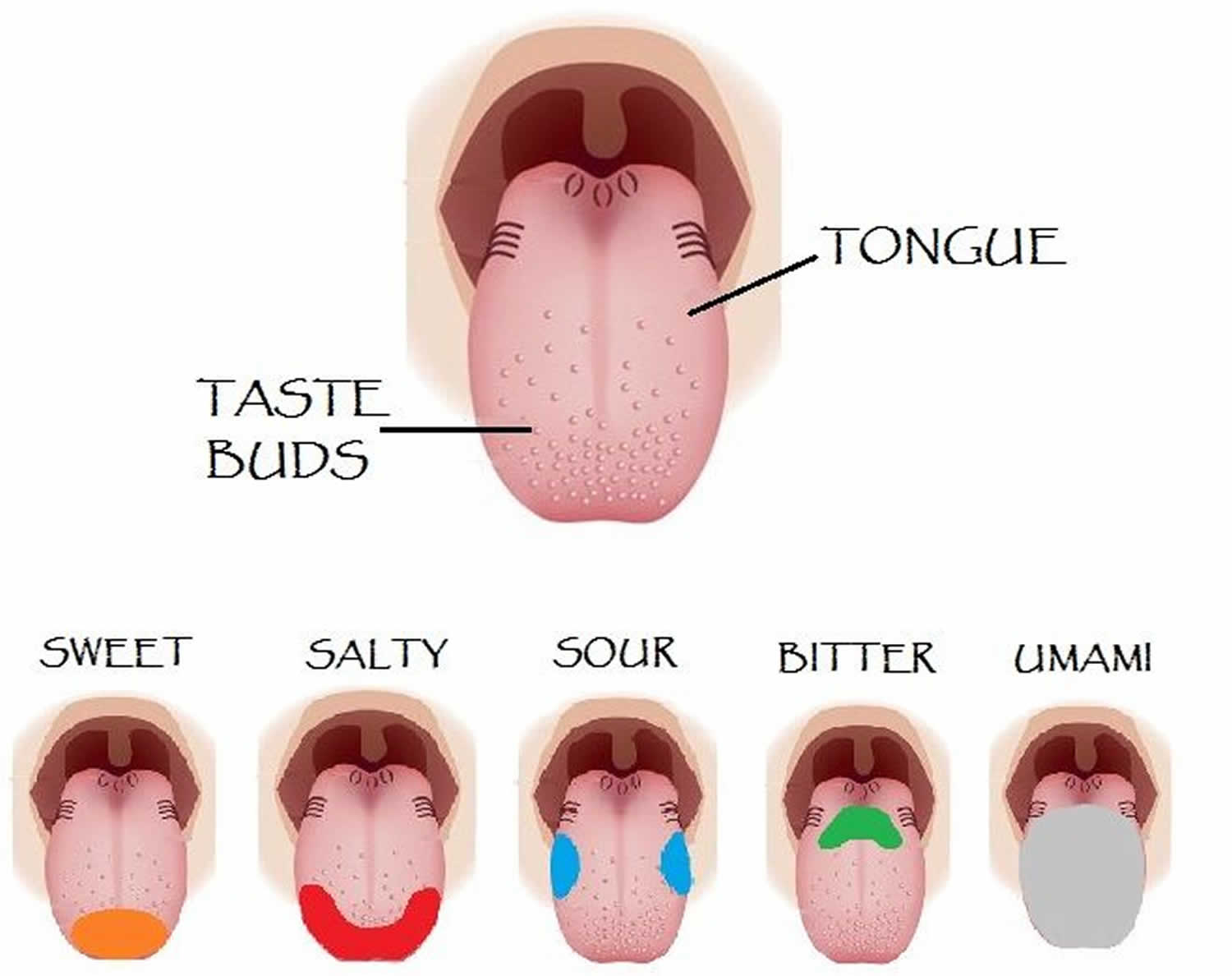
Introduction
Have you ever wondered if there are taste buds in your throat? Well, the answer is not as straightforward as a simple yes or no. In this article, we will explore the science behind taste buds and their location in the body, including whether or not they can be found in the throat.
What are Taste Buds?
Taste buds are sensory organs that are responsible for detecting the different tastes in the foods and drinks we consume. They are located all over the tongue, as well as on the roof of the mouth, cheeks, and even the throat. Taste buds are made up of clusters of cells called taste receptor cells, which are sensitive to different tastes such as sweet, sour, salty, bitter, and umami.
Location of Taste Buds

As mentioned earlier, taste buds are located all over the tongue, as well as on the roof of the mouth and cheeks. However, they can also be found in the back of the throat, near the entrance to the esophagus. These taste buds are responsible for detecting bitter and sour tastes, which can be helpful in identifying potentially harmful substances that may have been ingested.
Taste Buds in the Throat

While taste buds can be found in the back of the throat, they are not as numerous as the ones found on the tongue. In addition, they are not as sensitive to different tastes as the taste buds on the tongue. This is because the taste buds in the throat are not directly exposed to the foods and drinks we consume, but rather to the chemicals that are released when we swallow.
The Role of the Throat in Taste

Even though taste buds in the throat may not play as significant a role in taste sensation as those on the tongue, the throat still plays an important role in our overall perception of taste. This is because the texture and temperature of foods and drinks can also affect our perception of taste, and these factors are experienced in the throat as well as on the tongue.
Other Factors That Affect Taste

Aside from taste buds, there are many other factors that can affect our perception of taste. These include our sense of smell, which is closely linked to our sense of taste, as well as our past experiences and cultural background. For example, someone who grew up eating spicy foods may have a higher tolerance for heat than someone who did not.
Conclusion
While taste buds can be found in the back of the throat, they are not as numerous or sensitive as those on the tongue. However, the throat still plays an important role in our overall perception of taste, as it is responsible for detecting the texture and temperature of foods and drinks. Understanding how taste works can help us appreciate the foods and drinks we consume even more.
Related video of Are There Taste Buds In Your Throat?
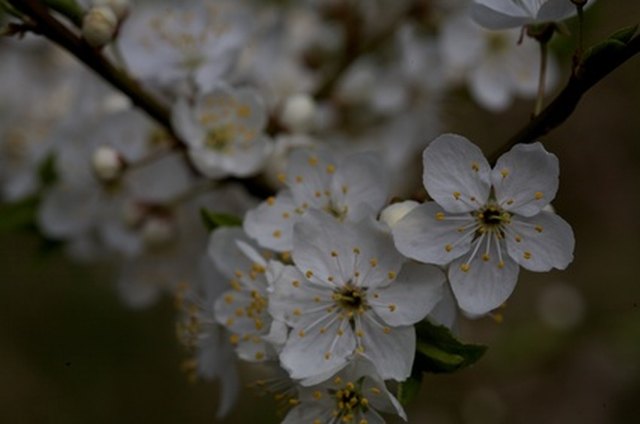
When it comes to apple trees, many people wonder if there are male and female apple trees. The short answer is no, there are no male or female apple trees in the traditional sense. However, there are some differences between apple trees that can affect their ability to produce fruit. In this article, we will explore the topic of male and female apple trees in more detail.
How Do Apple Trees Produce Fruit?

Before we dive into the differences between apple trees, it's important to understand how they produce fruit. Apple trees are self-incompatible, which means that they cannot fertilize their own flowers. Instead, they rely on cross-pollination from other apple trees to produce fruit. This is why you often see apple orchards with rows of different apple varieties.
Apple trees produce flowers that contain both male and female reproductive structures. The male structures produce pollen, while the female structures contain the ovules that will eventually become the apple fruit. When a bee or other pollinator visits the flower and transfers pollen from the male to the female structures, fertilization occurs and the fruit begins to develop.
What Are Pollinizer Trees?

While apple trees do not have separate male and female trees, some varieties are better at producing pollen than others. These varieties are often referred to as pollinizers or pollinator trees. Pollinizer trees are planted alongside other apple varieties to increase the chances of successful cross-pollination.
The ideal pollinizer tree will bloom at the same time as the main variety, produce abundant pollen, and be compatible with the main variety. Some common pollinizer trees for apple varieties include crabapple trees and other apple varieties with overlapping bloom times.
What Are Triploid Apple Trees?

Another factor that can affect apple tree fruit production is ploidy level. Most apple trees are diploid, meaning they have two sets of chromosomes. However, some apple trees are triploid, meaning they have three sets of chromosomes. Triploid apple trees are sterile and cannot produce viable pollen, which means they cannot pollinate themselves or other apple trees.
While triploid apple trees cannot produce fruit on their own, they can still play an important role in apple orchards. They are often used as pollinizer trees because they bloom later than other varieties and can extend the apple harvest season. Additionally, triploid apple varieties tend to have larger fruit and better disease resistance than diploid varieties.
Conclusion

In summary, there are no male or female apple trees in the traditional sense. Instead, apple trees rely on cross-pollination from other varieties to produce fruit. Pollinizer trees and ploidy level can affect apple tree fruit production, but there is no need to worry about finding a male or female tree. By planting a variety of apple trees with overlapping bloom times, you can ensure a bountiful harvest of delicious apples.
Related video of Are There Male And Female Apple Trees?
Have you ever eaten a peach and wondered if there are almonds in the pit? This is a common question that many people have, and the answer is both yes and no. In this article, we will explore the relationship between peaches and almonds and help you understand what is really inside a peach pit.
What Are Peach Pits?
Also known as peach stones, peach pits are the hard, woody structures that are found inside the center of a peach. They are typically oval-shaped and range in size from small to large, depending on the variety of peach.
Peach pits play an important role in the reproduction of peach trees. Inside the pit, there is a seed that can be used to grow a new peach tree.
What Is Inside Peach Pits?
Inside a peach pit, there is a kernel or seed that is similar in shape and size to an almond. However, this seed is not a true almond.
The kernel inside a peach pit is actually a type of drupe, which is a fruit that has a hard outer shell surrounding a seed. Almonds are also drupes, which is why they look similar to the seed inside a peach pit.
Can You Eat Peach Pits?

While the kernel inside a peach pit is technically edible, it is not recommended to eat peach pits. The outer shell of the pit is extremely hard and can be difficult to crack open, and there are also potential health risks associated with eating peach pits.
Peach pits contain a compound called amygdalin, which can break down into cyanide when ingested. While the amount of cyanide in a single peach pit is typically not enough to cause harm, eating multiple pits or grinding them up can be dangerous.
Can You Grow Almonds From Peach Pits?
While the kernel inside a peach pit looks similar to an almond, it cannot be used to grow a true almond tree. This is because the two types of trees are different species and have different requirements for growth.
However, it is possible to grow a new peach tree from the seed inside a peach pit. Simply remove the kernel from the pit, plant it in soil, and wait for it to sprout.
Conclusion
So, are there almonds in peach pits? While the kernel inside a peach pit looks similar to an almond, it is actually a different type of seed. Eating peach pits is not recommended due to potential health risks, and it is not possible to grow true almonds from peach pits. However, you can use the seed inside a peach pit to grow a new peach tree.
Related video of Are There Almonds In Peach Pits?

Introduction
When you think of berries, strawberries are probably one of the first things that come to mind. However, you may be surprised to learn that strawberries are not actually considered berries in the botanical sense.
What is a Berry?
A berry is a type of fruit that is produced from a single ovary of a flower. It typically has multiple seeds and a fleshy interior. Examples of true berries include blueberries, cranberries, and grapes.
Strawberry Anatomy

Strawberries, on the other hand, are not produced from a single ovary. They are actually an aggregate fruit, which means they are formed from multiple ovaries of a single flower. The seeds are located on the exterior of the fruit, rather than the interior.
The Botanical Definition
According to the botanical definition, strawberries are not considered true berries. Instead, they are classified as accessory fruits because the fleshy part is not derived from the ovary, but rather from the receptacle in which the ovaries are found.
The Culinary Definition
However, in culinary terms, strawberries are often classified as berries because they have a similar texture and taste to other true berries. This is why you will often see them referred to as berries in recipes and menus.
Other Examples of Misnamed Fruits
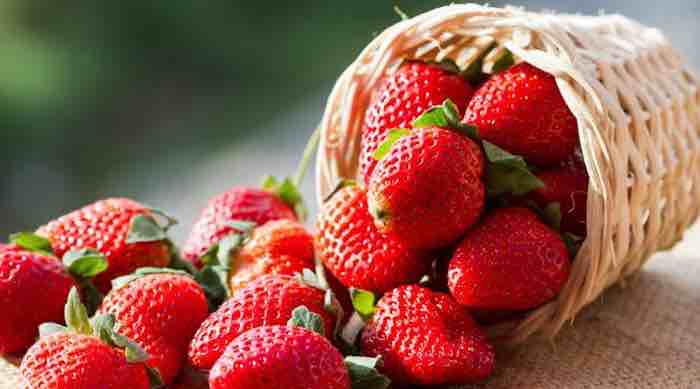
Strawberries are not the only fruits that are misnamed. For example, bananas are actually classified as berries in the botanical sense, while watermelons are classified as pepos, which are a type of berry with a hard rind.
The History of Strawberries
The name "strawberry" actually comes from the fact that the fruit was traditionally grown on straw beds. The first recorded mention of the fruit dates back to the Roman Empire, where it was used for medicinal purposes.
Health Benefits of Strawberries

Despite not being a true berry, strawberries are still packed with health benefits. They are high in vitamin C, fiber, and antioxidants, which can help reduce the risk of heart disease, cancer, and other chronic illnesses.
Strawberry Varieties
There are many different varieties of strawberries, each with its own unique flavor and appearance. Some of the most popular varieties include the Chandler, Albion, and Seascape.
How to Grow Strawberries
If you are interested in growing your own strawberries, they can be grown in a variety of climates and soil types. They prefer full sun and well-draining soil, and can be grown in containers or in the ground.
How to Store Strawberries
When storing strawberries, it is important to keep them dry and cool to prevent them from spoiling. They should be stored in the refrigerator in a single layer, and should not be washed until just before eating or using in a recipe.
Uses for Strawberries

Strawberries are a versatile fruit that can be used in a variety of recipes. They are often used in desserts, such as strawberry shortcake and strawberry pie, but can also be used in savory dishes, such as salads and salsas.
Conclusion
While strawberries may not be considered true berries in the botanical sense, they are still a delicious and nutritious fruit that can be enjoyed in a variety of ways. Whether you are eating them fresh, cooked, or blended into a smoothie, strawberries are sure to add a burst of flavor to any dish.
Related video of Are Strawberries Not Berries?
Repressed memories are memories that have been allegedly unconsciously blocked due to the trauma that they contain. The idea behind repressed memories is that when a person experiences trauma, the brain can block out the memory as a form of self-protection. However, the validity of repressed memories has been a topic of debate among mental health professionals and researchers for decades.
What are Repressed Memories?

Repressed memories are memories of traumatic events that have been forgotten or blocked out of a person's conscious awareness. These memories are often not recalled until later in life, sometimes after years of therapy or other forms of treatment. The idea of repressed memories was first introduced by Sigmund Freud, who believed that traumatic experiences that were too painful to remember consciously were pushed into the unconscious mind where they could be repressed.
Controversy Surrounding Repressed Memories

There is significant controversy surrounding the validity of repressed memories. Some mental health professionals and researchers believe that repressed memories are a real phenomenon and can be retrieved through therapy or other forms of treatment. However, others argue that repressed memories are not real and are instead the result of suggestion or imagination.
Recovered Memories

Recovered memories are memories that have been brought back into conscious awareness after a period of forgetting. These memories are often associated with traumatic experiences and can be retrieved through therapy, hypnosis, or other forms of treatment. However, the validity of recovered memories has also been a topic of debate among mental health professionals and researchers.
The False Memory Syndrome Foundation

The False Memory Syndrome Foundation is an organization that was founded in 1992 to provide support and information to individuals and families who have been affected by false memories. The organization argues that many of the memories that are retrieved through therapy or other forms of treatment are not real and are instead the result of suggestion or imagination.
Conclusion
The validity of repressed memories continues to be a topic of debate among mental health professionals and researchers. While some believe that repressed memories are a real phenomenon, others argue that they are not real and are instead the result of suggestion or imagination. Regardless of where one stands on this issue, it is clear that the topic of repressed memories is complex and requires further research and discussion.
Related video of Are Repressed Memories Valid?

Introduction
Pringles are a popular snack that many people enjoy. They come in a variety of flavors and are easy to eat on the go. However, there have been concerns about whether or not Pringles are bad for you. In this article, we will explore the nutritional content of Pringles and discuss whether or not they are a healthy snack option.Nutrition Information
Pringles are made from dehydrated potatoes, corn flour, wheat starch, and various additives. They are high in carbohydrates, with a serving of 16 chips containing 15 grams of carbs. They also contain 9 grams of fat, with 2.5 grams being saturated fat. A serving of Pringles has 150 calories, with 90 of those calories coming from fat.Salt Content
One of the biggest concerns about Pringles is their high salt content. A serving of Pringles contains 150 milligrams of sodium, which is 10% of the recommended daily intake. Eating too much salt can lead to high blood pressure, which can increase the risk of heart disease and stroke.
Artificial Flavors and Additives
Pringles are made with artificial flavors and additives to enhance their taste and texture. Some of these additives, such as monosodium glutamate (MSG), have been linked to health problems like headaches, nausea, and allergic reactions. While the amounts of these additives in Pringles are small, they can still be a concern for some people.Alternatives to Pringles
If you are looking for a healthier snack option, there are many alternatives to Pringles. Fresh fruits and vegetables, nuts, and popcorn are all good options. These snacks are lower in calories and salt and are often more nutritious than processed snacks like Pringles.
Conclusion
While Pringles can be a tasty snack, they are not the healthiest option. They are high in salt and contain artificial flavors and additives. If you are looking for a healthier snack, consider alternatives like fresh fruits and vegetables, nuts, and popcorn. However, if you do choose to eat Pringles, be sure to do so in moderation.Related video of Are Pringles Bad For You?
Police dogs are often seen as fierce and aggressive animals that are trained to take down criminals. However, many people wonder if these dogs are friendly and approachable when they are not on duty. In this article, we will explore whether police dogs are friendly or not.
What Are Police Dogs?

Police dogs, also known as K9s, are specially trained dogs that work alongside law enforcement officers. They are trained to perform a variety of tasks, such as tracking suspects, searching for drugs and explosives, and apprehending criminals. The most commonly used breeds for police work are German Shepherds, Belgian Malinois, and Dutch Shepherds.
Are Police Dogs Dangerous?

While police dogs are trained to be aggressive when necessary, they are not inherently dangerous animals. They are trained to bite and hold onto suspects until their handlers can apprehend them, but they are not trained to attack people indiscriminately. However, like any animal, police dogs can be unpredictable, and their behavior can depend on a variety of factors, including their training and their environment.
Can You Pet a Police Dog?

While police dogs are working, it is important to remember that they are on duty and should not be approached or petted. They are trained to be focused on their tasks, and any distractions can be dangerous for both the dog and the officers they are working with. However, when police dogs are off duty and at home with their handlers, they can be friendly and approachable.
How Are Police Dogs Trained?

Police dogs undergo rigorous training to prepare them for their duties. They are trained to follow commands from their handlers, track scents, and apprehend suspects. The training process can take several months, and the dogs are constantly being evaluated to ensure that they are performing at the highest level possible.
Do Police Dogs Get Hurt?

Police dogs can be injured in the line of duty, just like their human counterparts. They are trained to take down suspects, which can result in bites and scratches. They can also be exposed to dangerous situations, such as fires or explosions. However, most police departments have protocols in place to ensure that injured dogs receive prompt medical attention.
Conclusion
Police dogs are not inherently dangerous animals, but they are trained to be aggressive when necessary. They are on duty when they are working and should not be approached or petted. However, when they are off duty, they can be friendly and approachable. Their training is rigorous, and they can be injured in the line of duty. Overall, police dogs play an important role in law enforcement and are valued members of the police force.
Related video of Are Police Dogs Friendly?
ads
Search This Blog
Blog Archive
- August 2022 (31)
- July 2022 (31)
- June 2022 (30)
- May 2022 (32)
- April 2022 (30)
- March 2022 (30)
- February 2022 (28)
- January 2022 (31)
- December 2021 (7)
About Me
